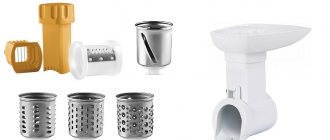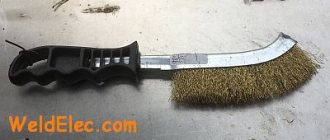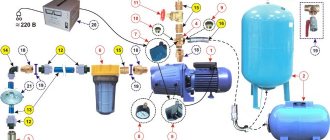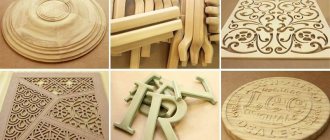When replacing metal pipes, situations often arise when you need to cut threads to connect individual parts of the pipeline. To make a high-quality joint, a thread-cutting tool is used. It is important to understand what types of this equipment there are and how threads can be made so that, if necessary, you can carry out repair work yourself.
Threading tool
Varieties
To choose one of the types of threading tools, you need to understand what types of threaded connections there are:
- Cylindrical and conical threads.
- Multi-start - consisting of several helical lines.
- Single-thread - consisting of one helical line.
Pipe threads can be made by rotating the tool to the right or left. The direction depends on the selected tool.
Power tools
You can find a large selection of electric tapping tools in hardware stores. The equipment allows you to increase the efficiency of human labor and increase productivity. Additionally, the quality of the work performed increases. Modern power tools allow you to create different types of carvings and work in hard-to-reach places. There is a special vice to secure the surfaces to be processed on the tool.
However, it is important to remember that power tools overheat quickly. Therefore, coolants must be used during operation.
Hand tools
Hand taps can be a separate accessory for power tools or attached to hand held fixtures. A hand tool consists of a handle and a body for securing the die. They can be single or symmetrical (depending on the type of thread being created). Two-piece tools can be equipped with a ratcheting mechanism for ease of use and convenience.
General information about threading
When choosing a tool for cutting threads, you should take into account the characteristics of the threaded surfaces. These include the following points:
- The cutting of turns is carried out mechanically using special equipment. When metal is removed, grooves and coils are formed that fit perfectly with the surface of the second element.
- All thread cutting tools and technologies used can be divided into two categories: manual and automated. For a long period, screw-cutting lathes were used.
- When using hand tools for thread cutting, lubricant must be used. It significantly extends the service life of devices and simplifies the threading process itself.
Thread cutting with different types of dies
It is worth considering that manual versions have an internal surface, which determines the size of the turns and their location. In the case of processing on a screw-cutting lathe, the parameters of the future threaded surface are determined by the feed and speed of movement of the caliper.
Ways to create a helix
To create threads, fastening threads and longitudinal grooves, you can use various devices and equipment. To make a quality connection, you need to know how to use certain devices.
Thread taps
Die
The die is used to create threads on metal pipes. The process of repair work:
- Places of future connection must be cleaned of dirt, paint, rust, and plaque.
- Remove the chamfer located at the ends of the pipe.
- Select a die of the required diameter and lubricate its teeth with special oil. Use it to treat the place where the carving will be.
- Make 6 turns of the die. In this case, you can do reverse scrolling to free the working surface from accumulating chips.
- Remove the die, clean it of chips, lubricate the teeth and pipe with oil. Repeat the procedure.
If the pipes are old, they must first be checked for defects. If there are cracks or holes, the product cannot be processed.
Klupp
It is a special thread-cutting tool for creating external threads. Work process:
- It is necessary to remove a layer of dirt, rust, and paint from working surfaces.
- Try to secure the workpiece in a stationary position.
- Apply drying oil to the work surface.
- Unscrew the support screws from the clamp and place it on the pipe.
- Attach the cutting dies and secure the structure with screws.
- With forward pressure, rotate the die clockwise.
Before removing the clamp, you need to squeeze out the dies.
With a cutter
This option for making threads involves the use of turning equipment. The master secures the pipe into the spindle. After this, he fixes the cutter in the support and adjusts it. After turning on the electric motor, the workpiece begins to rotate. The master slowly brings it to the cutter and begins processing.
Tap
Taps are used to create internal threads. Use of taps:
- The product is fixed in a vice.
- The diameter of the tap is selected. It is secured in a special device - a collar.
- It is necessary to make two turns clockwise and half a turn in the opposite direction. This will prevent chips from getting stuck between the cutting teeth.
If a ductile metal alloy is used, you can use a screwdriver into which the tap is secured.
Before using taps, it is necessary to calculate the diameter of the future hole. There are certain tables for this that can be found on the Internet. For example, if the outer diameter of the pipe is 10 mm, then the hole should be 1 mm smaller.
Electric thread cutter
You need to use power tools carefully so as not to damage the surface being processed. Work process:
- Cut the pipe at a 90 degree angle.
- A support bracket is installed under the pipe.
- The working surface is covered with coolant.
- The guide lever is located.
- Next, you need to turn on the thread cutter and press it against the workpiece.
- Coolant must be supplied during operation.
To remove the cutting tool, reverse gear is engaged.
Threaded dies for increased productivity
Some thread cutting tools are characterized by high efficiency when used. An example is thread dies, which can be used to produce threads of almost any size. Their advantages include the following:
- Simple design.
- Versatility in use.
- High efficiency.
- Manufacturability.
The combs are represented by multi-filament shaped cutters, which are of prismatic, round and rod type. Most often they are used for cutting threads with fine pitches and low profile heights.
Requirements for using the device
Before you start working with a power tool to create threads, you should familiarize yourself with certain requirements:
- When working with old pipes, you need to use a gas wrench to hold them.
- Before turning on the equipment, you need to clean the cutting part from old chips. The same applies to the surface being treated.
- Check the direction of rotation of the dies in advance.
- Use coolant during operation.
Before using a power tool, it is necessary to chamfer the end of the pipe.
Threading tool with gas wrench
How to properly cut turns on a water pipe
Recommendations for cutting turns on a water pipe are largely related to what technology is used. Hand tools for cutting external threads should be used taking into account the following information:
- It is necessary to use lubricants that are added to the cutting zone to reduce the wear of the cutting edge.
- At the time of work, you need to ensure that the tool is positioned strictly perpendicular to the workpiece. If it is displaced, the turns may be positioned incorrectly relative to each other.
- When thread cutting, attention is paid to ensuring that chips are removed from the cutting zone in a timely manner.
Tapping a water pipe
The work in question can also be carried out in domestic conditions.
Marriage and its reasons
There are several reasons why a workpiece may be rejected:
- Lack of coolant.
- The craftsman did not chamfer before starting to cut the thread.
- Using faulty equipment.
- Dull or damaged teeth on the cutting tool.
Do not use excessive force when working with hand tools.
A thread-cutting tool allows you to independently create reliable connections between metal pipes and other parts. Knowing the types of accessories and equipment, you can easily select a device and easily carry out repair work. If you follow the basic rules for working with a tool, you can reduce the number of defects.
Thread cutting tool
The threaded type of connection is the most widely used today. It is used in mechanical engineering and other areas of production, is characterized by high reliability and ease of manufacture. If desired, you can cut the coils using special tools, which are characterized by practicality and versatility in use.
Receipt methods
There are two main methods for obtaining threads. They are divided into cutting and rolling. Also different methods are used for internal and external threads.
For example, for external work, you need to use different dies, cutters, thread cutters and combs, or rollers on thread rolling machines.
When choosing one method or another, you need to take into account the desired thread profile, the nature of the material, the required volume and accuracy.
This is interesting: Silver plating at home: a review of silver plating methods
What is a tap
A tap is a cylindrical tool designed for cutting threads inside fasteners, including nuts and pipes.
Various tap designs make them a versatile tool for cutting internal threads. Photos posted on the pages of Internet resources allow us to judge this. The variety of design solutions for taps is determined by the material of the workpieces being processed, as well as the nature and conditions of the process itself. Despite all the model diversity, the basic principle of operation and structure of the taps remains the same. The tool creates a thread by screwing it in.
How is the operation performed and what is its essence?
The main task of the mechanic is to create a hole in the metal thickness with the subsequent formation of hollows from the inside. They need to be made so that the turns fit the bolt, stud or other fastener.
A threaded element may be needed in everyday life for the most durable connection of two parts. Here it is necessary to achieve maximum cleanliness - so that there are no shavings, deformations, or broken threads left. It is also very important to follow GOST standards for the size of the device. The diameter should match the screw that will go inside.
Many parameters are important - the type of material, its density, as well as condition, for example, temperature, the presence of corrosion. First you need to prepare the workpiece - remove excess dirt. Then you need to select the right tool, and only then begin metalworking in two or three stages - from roughing to finishing.
Several parameters matter:
- hole diameter;
- cutting depth;
- number of threads (these are entries, the most common is the presence of three cavities);
- pitch, that is, the distance between two furrows.
Machine taps
If the thread is cylindrical or conical, has a pitch of up to 3 mm, and it must be placed in a blind or through hole, then it is recommended to use a machine or mechanical device. Although hand cutting is also possible. Machine taps have very large shanks and tap sizes.
If the threading process is carried out on a part made of high strength steel, then a set of two sets of taps will be required. For workpieces made of structural steel, the use of one tap is permissible. This also applies to cast iron parts.
This type of tool is distinguished by the profile of the grooves, designed for quick removal of chips, and the shape of the shank, convenient for mounting in a spindle or chuck.
Hand taps
There are taps that are used as a bench tool for cutting internal threads. They are called hand taps. They are offered, as a rule, in sets of two or three pieces. Although all taps have the same diameter, they are different. The first roughing tap makes a rough cut of the thread, the second (middle) tap cuts off a smaller layer. Filigree processing of the profile is ensured by a third, finishing tap. The achieved smoothness ensures easy connection with bolts and studs.
To distinguish complete taps, marks are applied on their tail part, where the thread size is indicated. The finishing tap has three circular marks, the medium one has two such marks, and the rough tap has one. In the “rough – middle – finishing” layout, the layer of material removed by taps is 50, 30 and 20% of the allowance, respectively.
Classification
There are a huge variety of carving types. They differ in profile shape, location, direction of entry, step size and many other parameters.
According to the shape of the thread profile there are
- Trapezoidal.
- Rectangular.
- Round.
- Persistent.
- Triangular: metric; inch; pipe
In direction of calls
- Left.
- Right.
By location
- External (like a bolt).
- Internal (like a nut).
On the surface on which the carving is made
- Cylindrical.
- Conical.
- According to operational purpose.
- Fasteners.
- Fastening and sealing.
- Running gear.
- Special.











